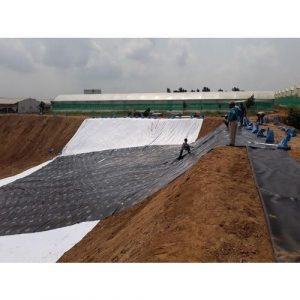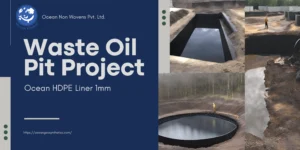Application of Ocean Geogrids in Railways

Ocean Geosynthetics, one of the leading manufacturers of a diverse geosynthetics suited for the Railways, have more than 20 years of experience in the geosynthetic industry and provide solutions for ground improvement, base stabilization, track drainage, and track bed stabilization. The premium quality Ocean Geogrids find use in railway track applications such as ballast stabilization and sub-ballast stabilization.
Table of Contents
The Significance of Geosynthetics in Railways:
Rising investment in environment friendly and sustainable infrastructure by the developed and developing countries around the globe have given the geosynthetic market a significant boost. As a sustainable and cost-effective option across various sectors, Geosynthetics also contribute to the extensive reduction of carbon footprint.
From a global market perspective, there is an on-going expansion drive of road and rail networks. This, in turn, drives the demand for geosynthetics.
In railways, high-speed corridors and new technology entail heavy axle loads requiring stable and robust tracks with optimized designs. The significant challenges include ground settlements, weak soil, load distribution, and track line asymmetry or degradation.
The use of high quality geosynthetics products and materials has been expanding and encompassing in more and more sectors. In the railway sector, they find a use for soft subgrade stabilization, ballast reinforcement, separation/filtration, improving the sub-ballast and capping stability, reinforcement of rail embankments, etc.
Role of Geogrids in Railways:
Among the other geosynthetics, the sturdy Ocean geogrids can withstand severe conditions. They can tolerate with ease the mechanically aggressive properties of the ballast and the high loads transmitted by trains.
Ocean Geogrids, Robust Tracks with Improved Performance.
The expertise you can count on
Geogrids are basically reinforcing geosynthetics made of polymeric products like polyester, high-density polyethylene, and polypropylene. They are formed by intersecting grids. Rib intersections form the grid matrix, in machine and cross-machine directions, with the openings referred to as apertures.
Based on the direction of stretching of ribs during the manufacturing process, geogrids are either Uniaxial or biaxial. While the uniaxial geogrids have high tensile strength in the longitudinal direction, the biaxial geogrids have tensile strength equally in the longitudinal and transverse directions.
Ballast and subballast stabilization with Geogrids:
Various field tests and installations worldwide are a testimony to the benefits of Geogrid technology for track bed stabilization. The use of geogrids improves the mechanical properties of unbound aggregate with particles penetrating through the apertures and getting locked in position, minimizing movement and improving the load-bearing capacity and load distribution.
Confining the unbound granular material reduces lateral spreading, enhancing ballast and subballast stabilization, and helps distribute the load more efficiently.
In conclusion, the Ocean Geogrids:
- Lower the construction costs
- Speed up construction and installation
- Maintain track geometry and symmetry.
- Minimize ballast settlement and load/traffic-induced degradation.
- Reduced maintenance costs with increased maintenance intervals.
Want to know more about how the range of Ocean geogrids and design tools could assist your next railway project?
The Ocean Geosynthetics’ team of highly experienced civil engineers is available for any advice or technical guidance you may need with your railway projects. We work with our clients and provide them the perfect solutions. The ultra-high-strength Ocean geogrids are the right products to suit your rail project specifications.
Need more information? Please contact us.



